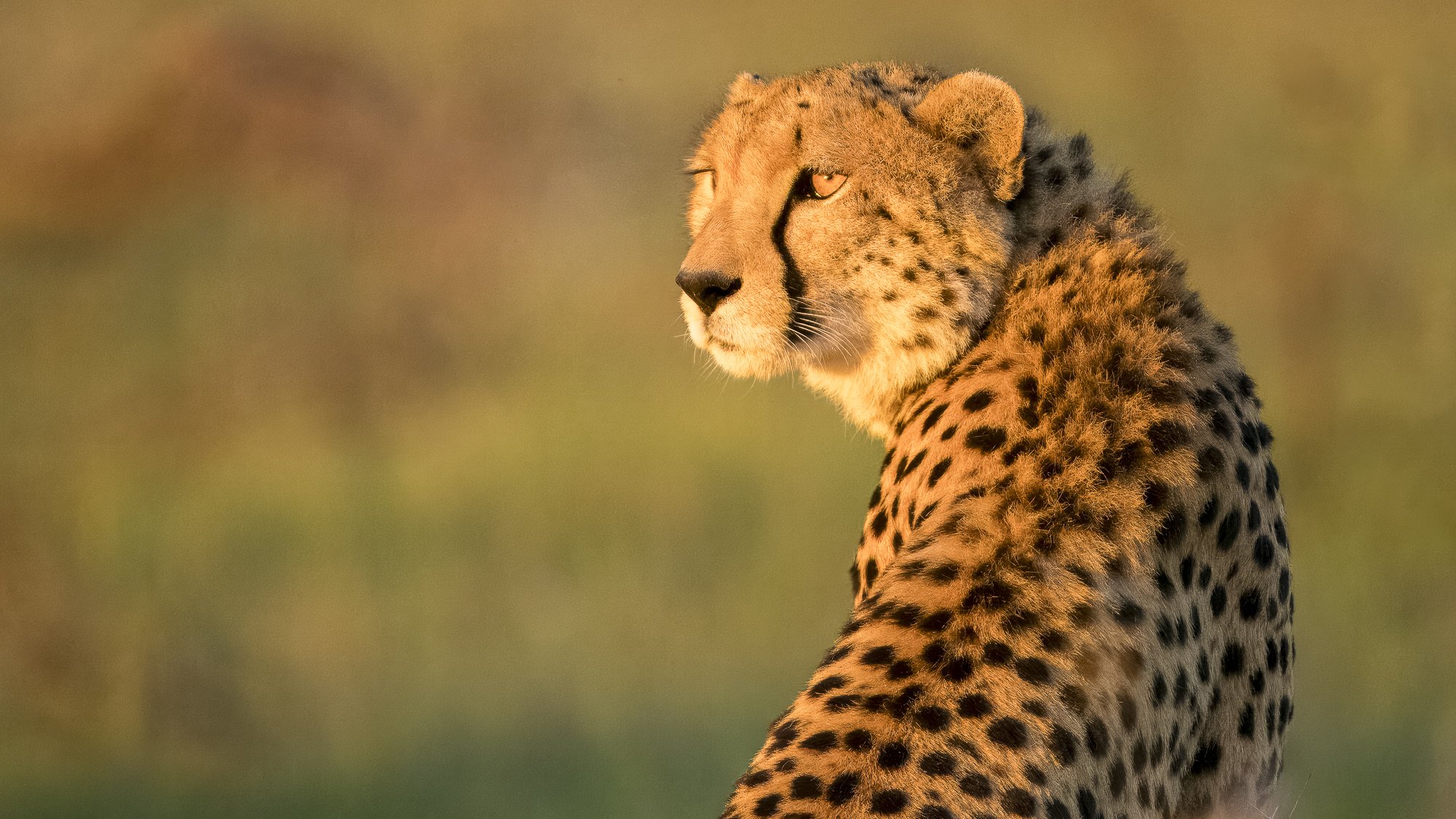
ULTIMATE KENYA PHOTO SAFARI - MASAI MARA
FEB 10-21, 2025
The Masai Mara region, situated in the southwest of Kenya and adjacent to the Serengeti, offers the iconic African Safari with breathtaking vistas, abundant wildlife and endless plains. The area is home to excellent year-round concentrations of wildlife. The Mara is a photographer’s paradise with abundant elephant, buffalo, giraffe, leopard, lion and cheetah alongside the migratory wildebeest and zebra. The region is also home to more than 450 bird species.
THIS IS A SPECIAL, EXCLUSIVE PHOTO SAFARI TO THE MAASAI MARA - HOME TO THE HIGHEST CONCENTRATION OF WILD ANIMALS IN THE WORLD
ONLY 4 GUESTS
EXCLUSIVE USE OF 2 SAFARI VEHICLES (only two guests per vehicle)
SPECIALIZED PHOTO VEHICLE WITH DROP-DOWN SIDE FOR EYE-LEVEL PHOTOGRAPHY
ALL-INCLUSIVE UPON ARRIVAL IN KENYA
ONE SPOT REMAINING FOR A FEMALE IN A SHARED ACCOMMODATION
SAFARI HIGHLIGHTS
All-inclusive Photo Safari offering superb game viewing and photographic opportunities:
2 Nights of lodging in Nairobi on Feb 10 & 11
9 Nights of luxurious lodging at low-tourism-density private conservancies in the Masai Mara
Flight transfers between Nairobi and the Masai Mara
Ground Transfers between camps
All food and beverage
All park and concession fees
Photographic coaching and instruction
Twice-daily Game Drives or All-day Game Drives
Specialized photo vehicle with drop down side…allowing you to lay down to get eye-level shots. Exclusive use for our group. You will split your time between this specialized vehicle and the typical safari vehicle.
Exclusive use of a 2nd vehicle (typical safari vehicle) where each person will have their own row
Private Conservancies have strict vehicle regulations to prevent over-crowding
Private Conservancies allow off-trail driving in order to get closer to wildlife
Silver graded, elite Guide (top 5% in Kenya) in each vehicle
Small group with a maximum of 4 guests
ABOUT THIS PHOTO SAFARI
The Masai Mara region in the southwest of Kenya is one of the world’s most iconic wildlife destinations with the highest concentration of wild animals in the world. The area is marked by abundant wildlife, breathtaking vistas and endless plains. The Masai Mara is comprised of the Masai Mara National Reserve and several private conservancies. The Mara is a must-see for every safari traveler.
Although we have the option to visit the Masai Mara National Reserve on this safari, we will be based in 3 community conservancies that are adjacent to the Reserve (sharing unfenced borders). There are numerous advantages to staying in these community conservancies even though it is more costly:
Private Conservancies are less crowded - they are restricted to a low-tourism-density of only one bed per 350 acres of wilderness.
Wildlife and predator densities are the highest in Africa
Only 4WD safari vehicles allowed…no minivans like in the National Reserve
There are strict regulations on vehicle conduct to prevent over-crowding
Off-trail driving is permitted in the Conservancies…we can drive through the “bush” to get better angles at wildlife sightings. Within the National Reserve you must stay on the trails.
Within the Masai Mara region we will be staying at three different camps within three different conservancies:
Mara North Conservancy
Naboisho Conservancy
Olare Motorogi Conservancy
This tour is for photographers of all skill levels. You will be provided with expert photographic instruction (both technical and creative) in the field. The techniques and explanations, adapted to the situation at hand, can be put into practice and immediately experienced in the field. In addition to the technical knowledge, you will gain a greater appreciation for, and understanding of, the magnificent animals we’ll encounter. We will spend most of our time and effort on making images. This is not a classroom-intensive trip. We will meet daily to review images and any classroom sessions will be purely optional.
The experienced guides who accompany us on game drives will explain the behavior and lifestyle of the animals as we encounter them, enabling you to take meaningful images depicting the nature of your fascinating subjects.
The tour accommodates a maximum of 4 photographers. We will have 2 vehicles with stadium style seating. The staggered seat position allows photography in all directions without a fellow guest getting in the way. Each of the three rows is reserved for a photographer and his/her equipment. Unlike tours in public game reserves and national parks, these private game reserves allow off-trail vehicle travel which will get you closer to the action and offer more angles from which to photograph your subjects.
WHAT TO EXPECT
MARA NORTH CONSERVANCY
The Mara North Conservancy is one of the most densely populated wildlife conservancies in the Mara ecosystem. An added benefit of visiting this conservancy is the feeling of exclusivity and intimacy due to the limited number of visitors allowed. Whether you visit the Musiara Marshes, the Rhino Crest, the Heaven Plain or the Leopard Gorge, memorable wildlife encounters are sure to follow.
Long golden grass and whimsical flat-topped acacia trees, the conservancy’s landscape is exactly as you would expect it to be. Thanks to conservation efforts such as natural environment regeneration and protection of wildlife from poaching and traps by wildlife rangers the conservancy now had one of the highest concentrations of wildlife in the Mara ecosystem. Aside from the Big 5 there are over 450 species of birds to spot, several species of antelopes gracing the plains and a variety of animals that seem to have stepped straight out of a story book.
The eastern side of the plains feature a network of wooded valleys and seasonal streams known as ‘luggas’. The area’s riverine forests are an emerald-hued refuge for the conservancy’s elephants, baboons, giraffes and hippos. To the west, forested hillsides flank the croc-infested waters of the Mara River with the towering Olooloo Escarpment rising up in the background.
From Leopard Gorge, a secluded big cat maternity ward, to the scenic Lemek Hills, a refuge for endangered African wild dogs, the conservancy’s location and landscape make it a first-class safari destination. During the months December – May, the conservancy is home to the Loita Hills migration. During this lesser known, yet still incredibly impressive migration, thousands of local wildebeest trek through the Mara North Conservancy.
NOBOISHO CONSERVANCY
The second largest Masai Mara conservancy, Mara Naboisho (Maasai for ‘coming together’), has one of the highest concentrations of wildlife in the Masai Mara region. The conservancy’s picturesque rolling hills, riverine acacia woodlands and sprawling grasslands are home to herds of elephant, giraffe, wildebeest and many lions. With only nine safari camps in operation at the conservancy this is just the place for an exclusive safari feel.
With 70 - 100 identified lions living in or near the conservancy, this area is known for having one of the highest densities of lions in Africa. Mara Naboisho’s wide open savannahs make it easy to spot the big cats in action. One of the area’s largest lion prides, made up of 22 lions, resides in the conservancy. As if that wasn’t enough, there are also over a dozen leopards living in the area. Of course, there’s a good reason for the presence of all the big cats living in this area. The conservancy is also home to prey in all shapes and sizes. Conservation efforts have created a healthy ecosystem where herds of elephant, giraffe, wildebeest and zebra thrive. Mara Naboisho Conservancy is also home to a rare breed of African wild dog. Although the conservancy isn’t in the direct ‘great migration’ route, its migration corridor sees hundreds of thousands of animals trekking from the Masai Mara National Reserve to the Loita Plains in the east in the months May – June and November – December each year.
Although you might be tempted to keep your eyes on the conservancy grounds, you may want to keep an eye on the skies as well. There’s no telling what might fly by. Naboisho is home to several very special bird species that very rarely stray from the area. Keep your binoculars handy to spot white-headed buffalo-weavers, northern white-crowned shrike, pygmy falcons, Von der Deckens hornbills, bush pipits and more. Although the 4-legged wildlife roaming this conservancy get more than their share of attention, bird-lovers scanning the blue skies and treetops are in for quite a treat while visiting the Mara Naboisho conservancy.
OLARE MOTOROGI CONSERVANCY
Two prides, 40 lions and some of the best lion-watching in the Mara ecosystem.
Just a skip and a jump to the northwest of the Masai Mara National Reserve lies one of the most enviably wild conservancies in the region. The Olare Motorogi Conservancy is known for having some of Kenya’s most spectacular scenery and remarkably high concentrations of wildlife. It features endless wavy grasslands and beautiful dome-topped hills that give way to the dramatic sheer rock walls of the distant Oloololo Escarpment.
Although most safari travelers choose to visit the Masai Mara during the high traffic months July through October, this conservancy offers its visitors magnificent game-viewing all year round. The hills are the year-round home to a remarkably diverse population of giraffes, wildebeests, warthogs and zebras. Naturally having these herbivores around in large numbers also makes the area more than a little attractive to predators. The conservancy is immensely popular among lions, hyenas, jackals, cheetahs, leopards and other meat eaters. The ‘luggas’ (small seasonal streams) that run through the conservancy’s hills are lined by beautiful green strips of forest. The vegetation attracts a variety of leaf-eaters such as elephants, baboons, buffaloes and hippos. During the great migration you’ll see quite a bit of action in the conservancy caused by the migrating herds passing through the wildlife corridors. However, you may have to take a drive to the south towards the Mara Confluence to see the more massive and dramatic river crossings.
SPECIALIZED PHOTO VEHICLE
Photography vehicles available in the Mara, with one side of the vehicle dropping down, allowing photographers to lie flat and capture eye-level images in comfort, with soft padded flooring, lens platforms, and bean bags all provided.
ITINERARY
FEB 10-12 - Guests fly into Nairobi International Airport two days ahead of the start of the safari in order accommodate for any potential travel delays and acclimate to the time difference. Most arrivals are in the evening and into the night so you really only have one full day at the hotel. The hotel has a gym, spa, rooftop pool, cocktail lounge, coffee shop and a couple of restaurants. These two hotel nights are included in the safari cost. On the second night, we will gather for a wonderful dinner with anticipation of the start of the safari on the next day.
FEB 12-15 - Valley Camp
We will start off Feb 12 with a lovely breakfast at the hotel followed by private shuttle to Wilson Airport in order to catch our flight to our first camp (usually in the late morning). We will arrive at the Valley Camp in time for our first game drive in the afternoon. Each day will consist of two game drives or an all day game drive (our choice).
FEB 15-18 - Bush Camp
Feb 15 will begin with a game drive from Valley Camp. In the middle of the day we will drive (about one hour) to Bush Camp and arrive in time for lunch and an afternoon game drive. Each day will consist of two game drives or an all day game drive (our choice).
FEB 18-21 - Mara Camp
Feb 18 will begin with a game drive from Bush Camp. In the middle of the day we will drive (about one hour) to Mara Camp and arrive in time for lunch and an afternoon game drive. Each day will consist of two game drives or an all-day game drive (our choice).
On the final day, Feb 21, we will do a morning game drive before being transported to the airstrip. In the middle of the day we will return to Nairobi in order to catch flights back home or extend your trip. We will be back in Nairobi around 2pm and will be transported to the hotel where you will have a day room reserved. You can relax at the hotel while you wait for your international flight in the late evening.
ACCOMMODATIONS
Kicheche operates 4 premium camps in private conservancies in the Masai Mara. We will visit 3 camps on this safari experience
Bush Camp - Olare Motorogi Conservancy
The perfect hideaway in the outstanding wilderness of Olare Motorogi Conservancy, Kicheche Bush camp has attracted scores of professional photographers who trust the Kicheche approach to a day on safari. That has created an exciting environment where any amateur photographer can raise their game and capture the sorts of images that inspired them in the first place.
Kicheche Bush Camp is located in a superb wildlife area in Olare Motorogi Conservancy bordering the Masai Mara Reserve. The game viewing is first class and the exclusivity of the Conservancy ensures a high quality African safari and Kenya holiday experience with low density tourism.
Simple luxury of an elegant common area for relaxing, having tea or dining
6 stylish tents spread our under Acacia trees
Spacious en-suite bathroom with running cold and hot water
A personal atmosphere prevails at Bush Camp where you will mist with other guests and your hots at meals and around the fire each evening for an aperitif
Lunch under the trees or in a form of a picnic while on a game drive
Water dispenser in each tent to refill your complimentary water bottle
Lighting is supplied 24 hours and charging facilities in the tent
Wi-fi in the lounge and in the guest tents

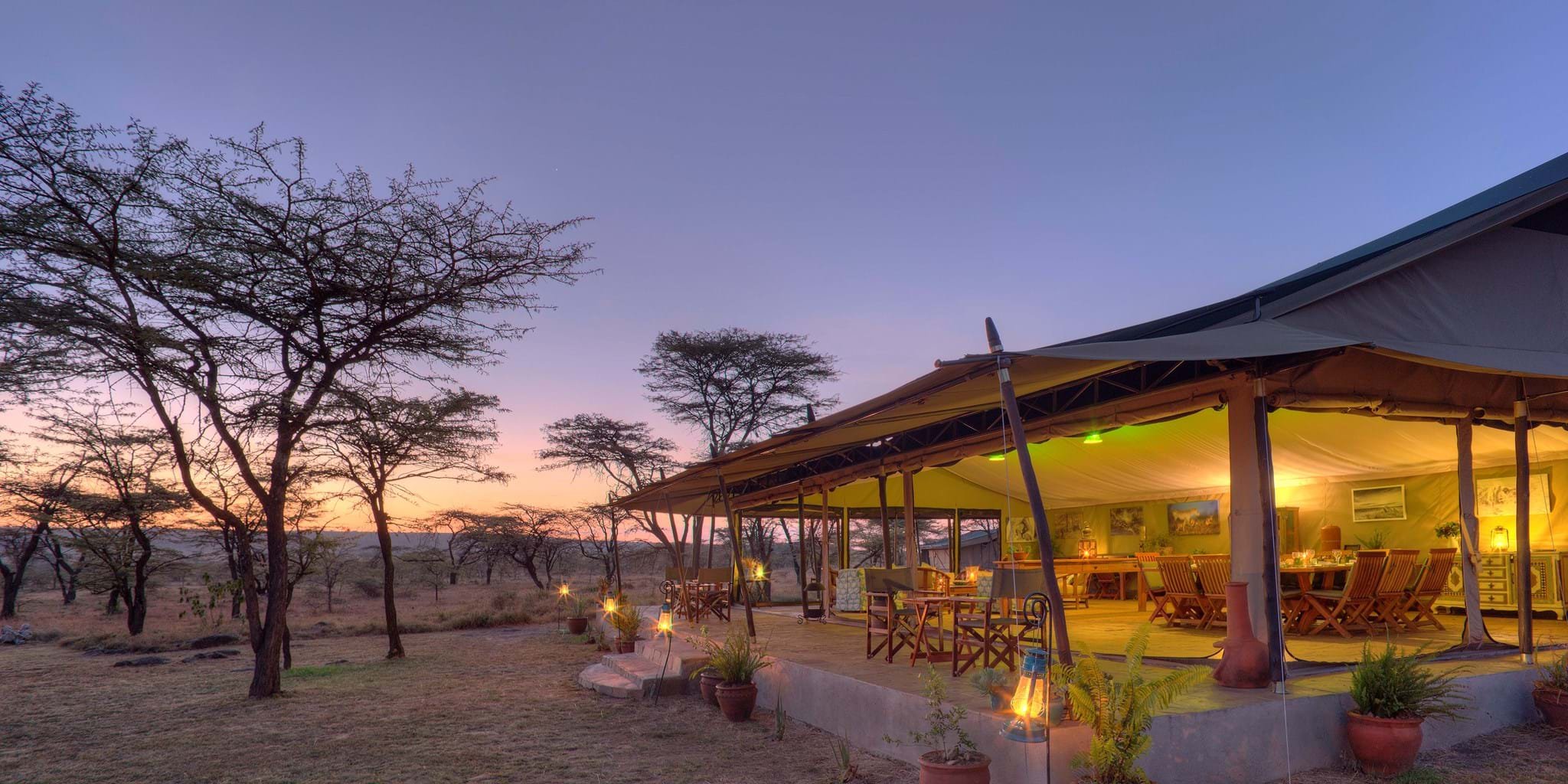
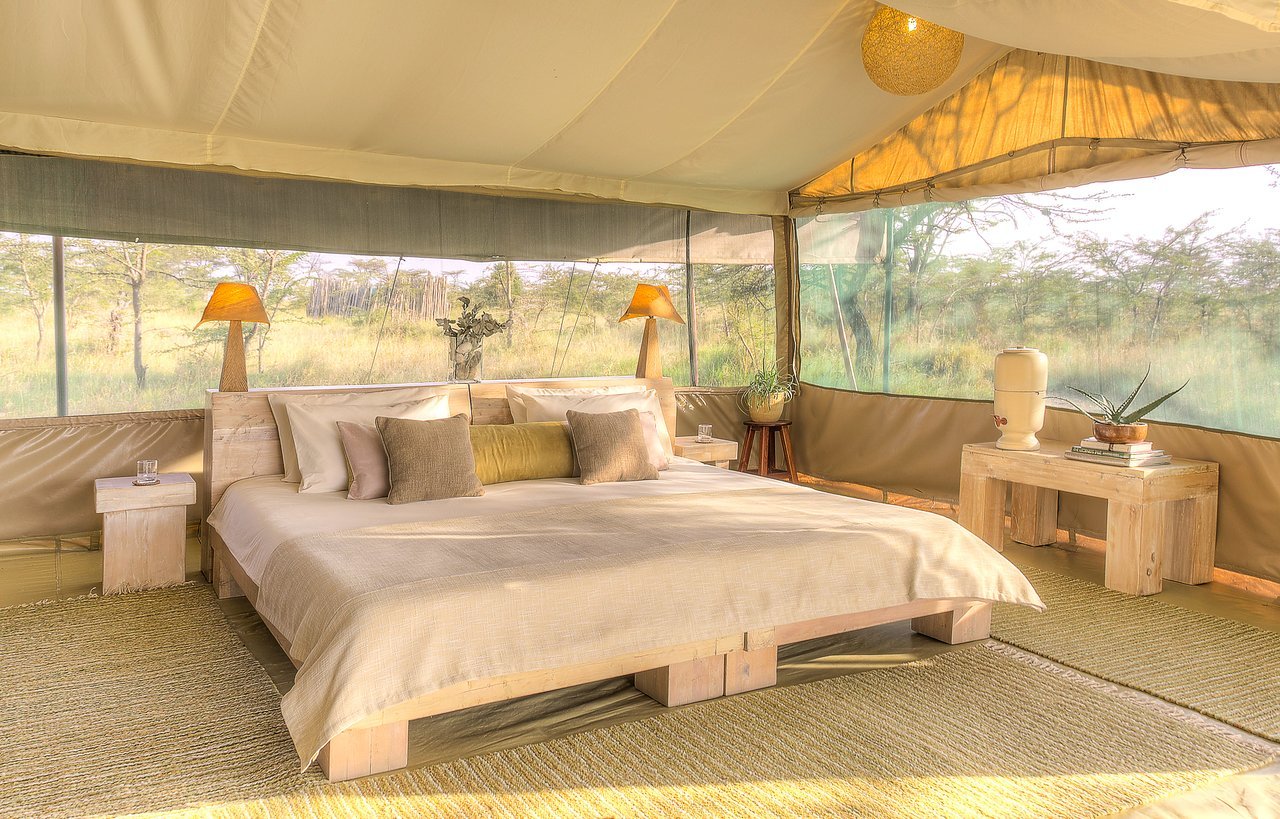
Valley Camp - Naboisho Conservancy
Kicheche Valley, located in acacia woodlands in a secluded valley of the Naboisho Conservancy, is an intimate luxury tented camp. The six luxurious tents, built in a unique style incorporating high eco-standards, are set on platforms and provide the perfect base to see the stunning wildlife and wilderness.
The personal touch of our hosts and limited numbers of guests will ensure a memorable stay at this special location.
Naboisho, which means “coming together” in Maa language, is a successful community venture to preserve the land and its wildlife through tourism revenues.
52,000 acres (210 km2) of private land dedicated to wildlife conservation.
The highest density of giraffes in the Maasai Mara ecosystem.
6 tents, octagonal in shape, set on a wooden platform
En-suite bathroom with running solar heated water.
Central dining and lounge area with stunning view on the valley and the extensive Mara plains
Small shop
Small spa for massages, pedicure, manicure
Water dispensers in the tents and communal area to refill your complimentary water bottle
Charging facilities in the tents (except for hair dryers)
WIFI in the lounge
Under the stars dining or communal dining with your host in the restaurant, the choice is yours. From the coconut and coastal spices to the Maasai beef, Kicheche Valley’s kitchen is a feast for the senses.
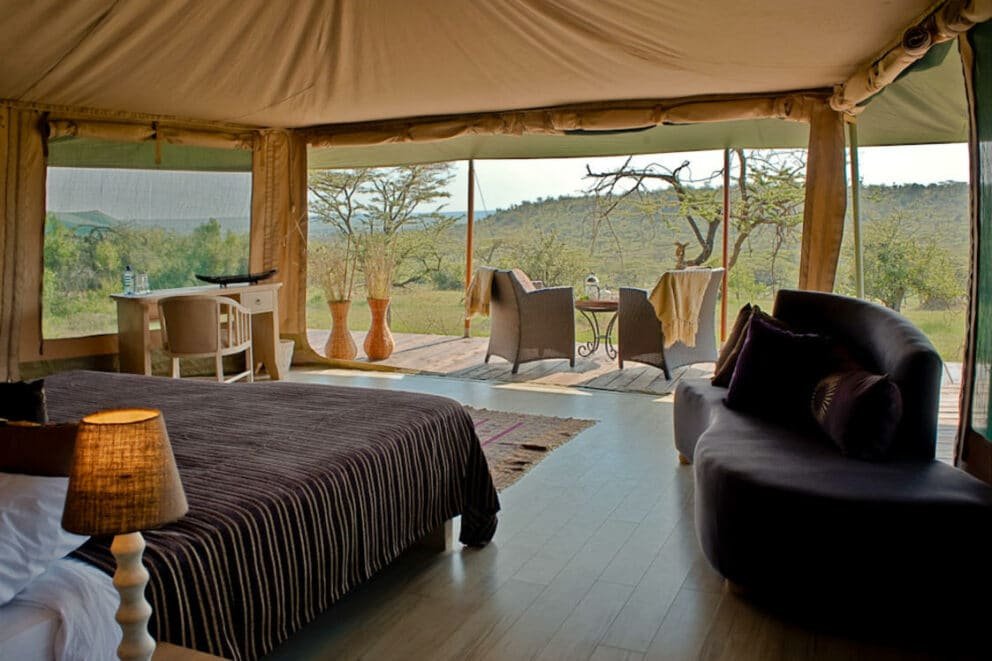
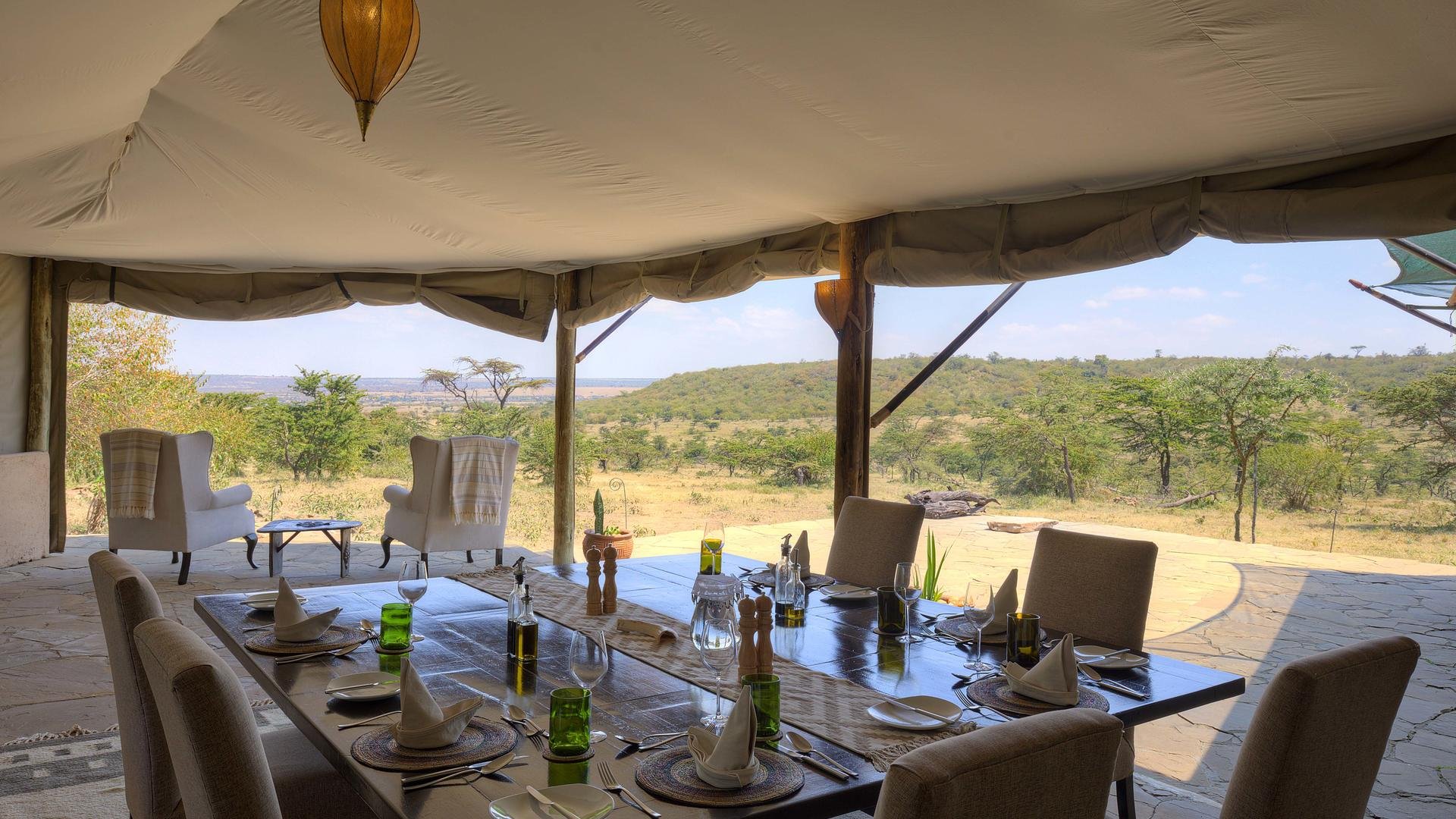
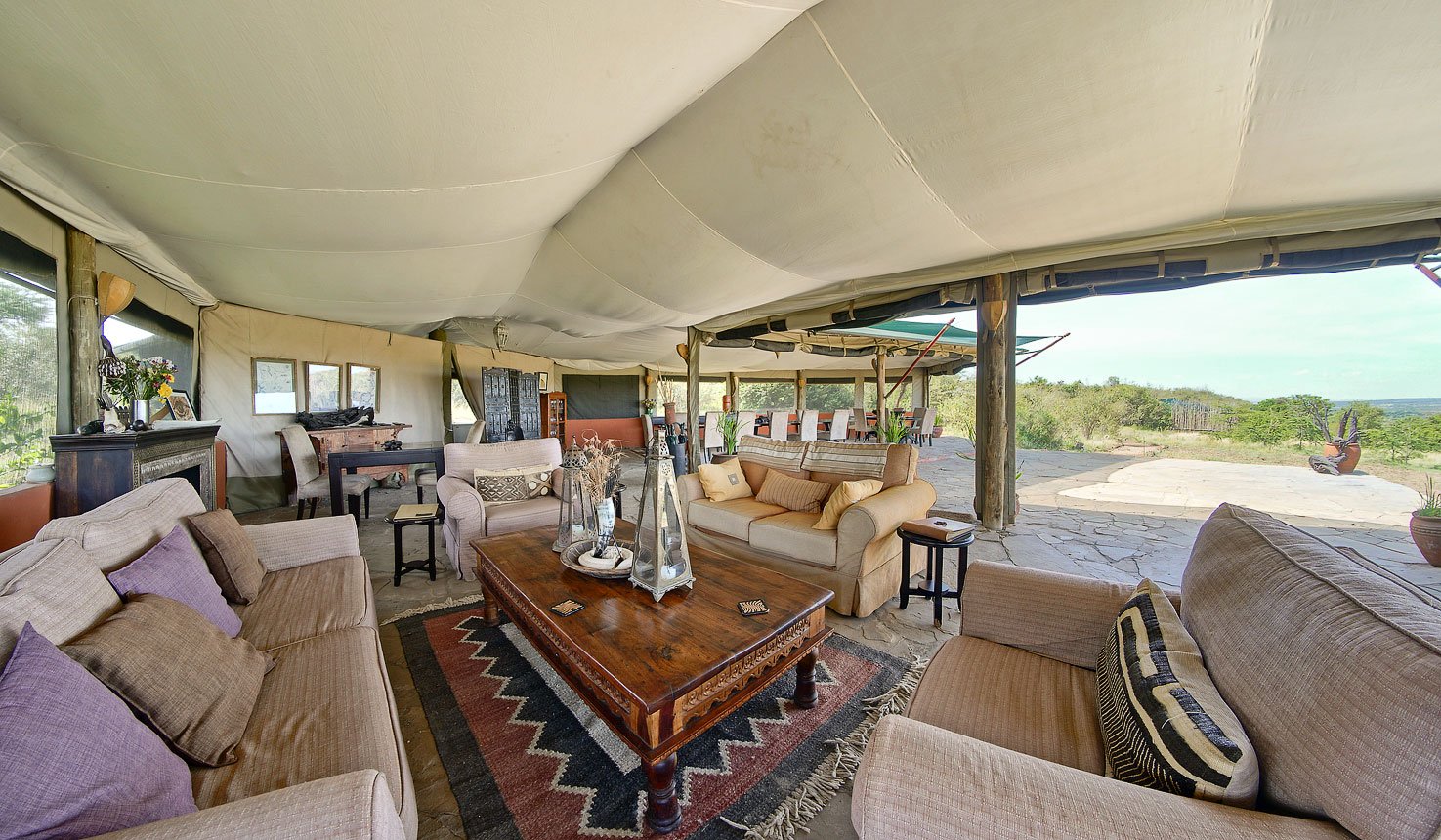
Mara Camp - Mara North Conservancy
Kicheche Mara Camp is a classic tented camp hidden in a beautiful valley in a prime wildlife area of the Mara North Conservancy. The luxury tents are laid out alongside a seasonal stream from where you can observe the resident birdlife and plains game beyond.
The location is ideal as game viewing frequently starts in the camp itself and there is prime wildlife habitat on all sides providing an ideal base for your safari in the Masai Mara.
Bordering the Mara Reserve, one of the biggest conservancies in the area. Mara North is included on the prestigious IUCN Green List of Protected and Conserved Areas.
Amazing game viewing all year round
The camp is located in an Acacia Valley, a prime wildlife area, in this top-quality Conservancy, and game viewing frequently starts in the camp itself.
With only nine tents an intimate and relaxed atmosphere is assured. All tents are overlooking the Olare Orok stream and the western escarpment of the valley. Triple and Quad family tents (1 double & 2 single beds) are also available
Spacious en-suite bathroom with running hot and cold water
The camp lounge has a stunning view down the valley and offers comfortable seating, a library, board games and local crafts
The camp prides itself on offering a friendly and intimate stay, with our hosts treating you as welcome guests, not just travel statistics. The camp is hosted and there is a team of attentive staff ensuring personal warmth and attention to any needs during your stay
Meals are taken in our dining tent or in the shade of a large euclea tree with a beautiful view down the valley
Water dispenser in the tents to refill your complimentary water bottles.
Lighting is supplied 24 hours; charging facilities available in the tents, however, the solar system does not allow hair dryers.
WIFI in the lounge
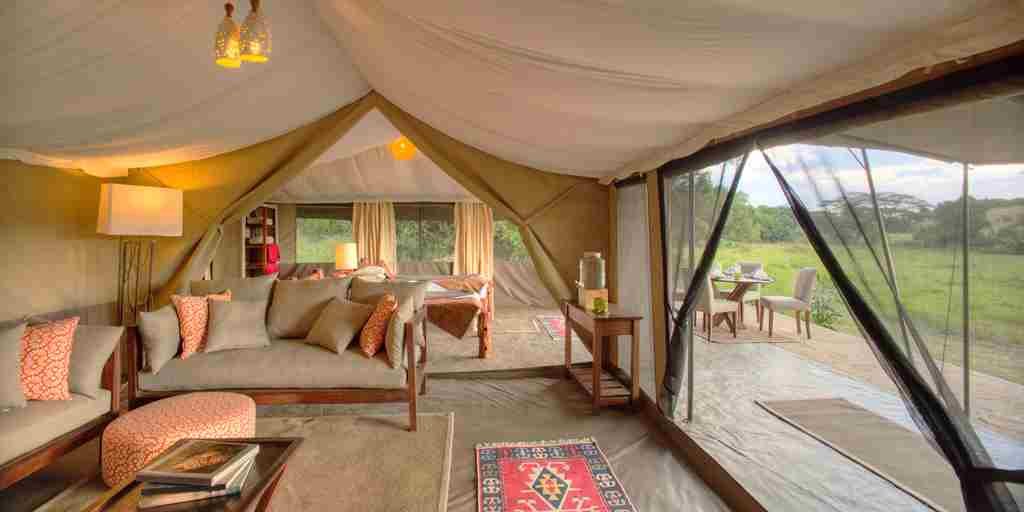
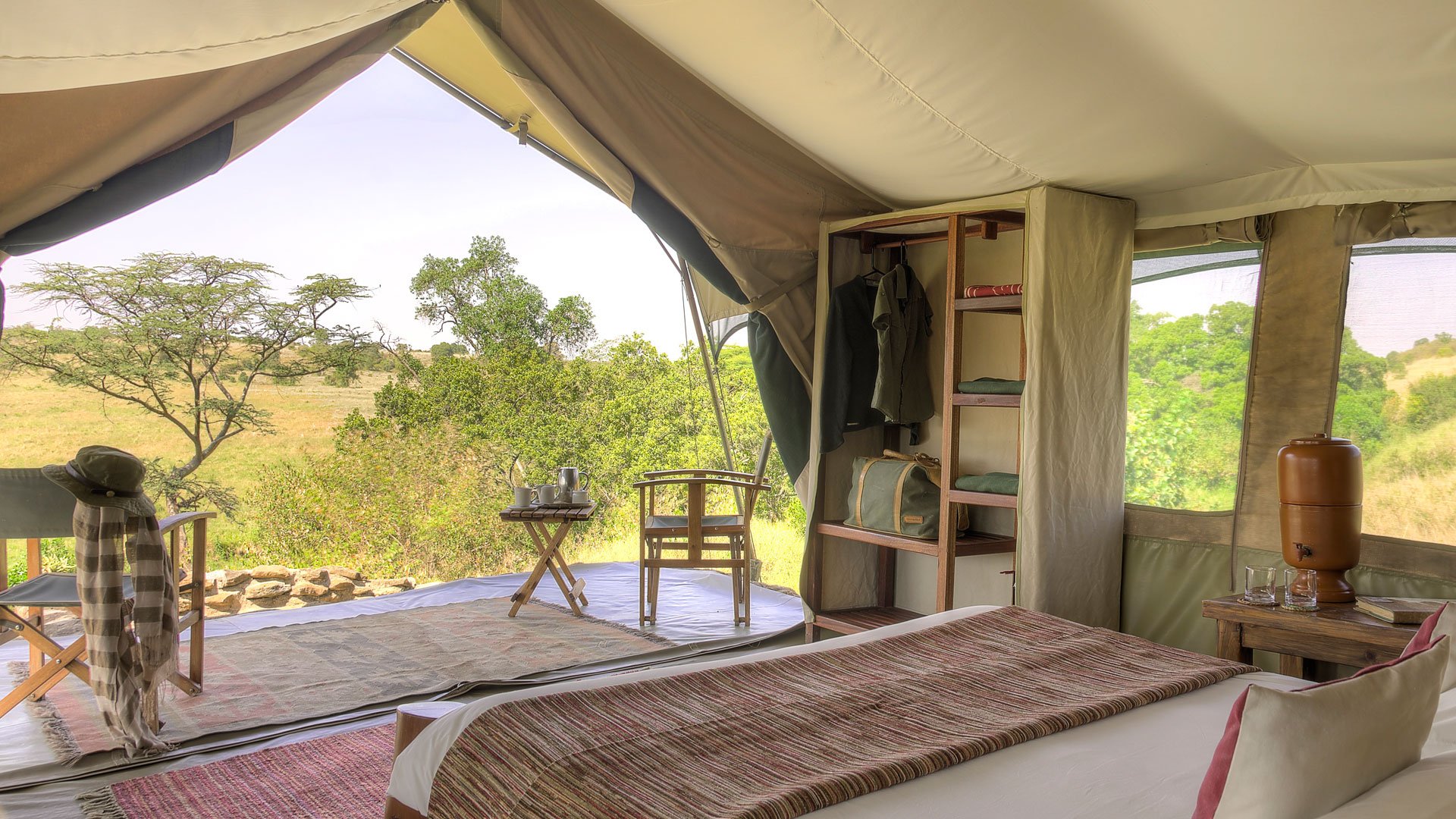
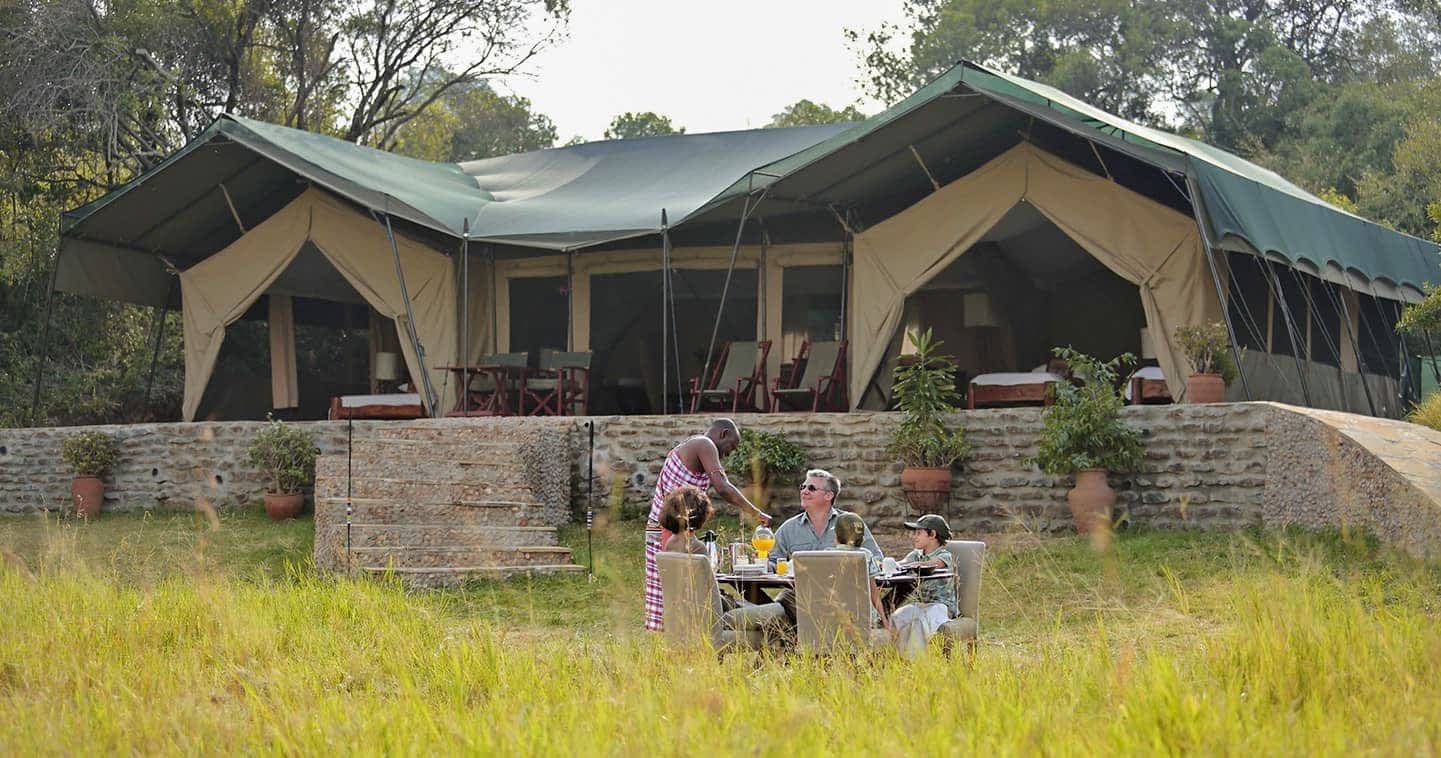
IMPORTANT CONSIDERATIONS AND DIFFERENCES WITH PHOTO-SPECIFIC SAFARIS
It is my goal to provide you with the best possible safari experience at a reasonable cost. Some of the things that make for the highest quality experience come at a cost and that is why you may find cheaper safaris out there. However, those cheaper safaris will very likely leave you frustrated as a photographer. Here’s what makes my African Photo Safaris stand out above others:
Private conservancies are expensive compared to other safari destinations
Private conservancies and reserves are far less crowded and need to charge more in order to be profitable. This has many benefits to the safari traveler, including not having to share sightings with dozens of other vehicles.Private Conservancies Offer Better Photography Opportunities
The three camps on this itinerary are on private conservancies that offer very limited access. This means that you will have more secluded and intimate wildlife experiences. Private conservancies also allow off-road driving so that you can get to wildlife anywhere…you can literally drive through the bush…in order to get close-up photo opportunities and get the best possible angle. Game drives at night and guided walking tours are also allowed in some of these areas.A Small Group (4 guests maximum) Allows for a Personalized and Intimate Experience
Photographing wildlife is much more special away from hordes of people. With such a small group, I can more easily tailor the experience to meet everyone’s needs and desires. We do not have to share a safari vehicle with others…we have exclusive use of 2 vehicles for 4 guests.Exclusive Use of 2 Safari Vehicles for 4-5 guests - including a Specialized Photo Vehicle
There really are no window seats on the safari vehicles we will be using…they are all open air. Safari vehicles generally have 2-3 rows of cushioned seats (each row seats 2-3 guests) and one seat next to the driver…meaning that a single vehicle can seat 10 guests. On this exclusive photo safari, I limit occupancy in a single vehicle to 2 guests. This means that there will be 2 guests in the regular safari vehicle (allowing each guest to easily shoot out of either side of the vehicle) and 2 guests in the Photo Vehicle. Guests will alternate game drives between the photo vehicle and the regular vehicle. The Photo Vehicle has one side that drops down so that you can lay or sit on the cushioned floor and photograph at eye level.Partnerships with Reputable African Companies
Your safety is of paramount importance and I only use companies that provide a safe experience throughout the entirety of your adventure. It is also important that your experience goes on uninterrupted in the unforeseen situation such as a vehicle break down (the camp should have back-up vehicles). I refuse to use some of the budget companies that I don’t trust to take care of its guests should something unforeseen happen (civil unrest, severe weather, etc.)
SIGN UP NOW
IMPORTANT INFORMATION
TRANSPORTATION WHILE ON SAFARI
While on game drives you will be transported in a 4x4 safari vehicle (usually a Land Rover or Land Cruiser) with open sides. These are modified vehicles to maximize wildlife viewing opportunities and your comfort.
PHYSICAL REQUIREMENTS - Easy to Moderate
To participate on this trip, you must be able to walk unassisted for short distances, climb steps to get into and out of a raised safari vehicle. You should be able to tolerate excursions that last 4-5 hours at time (and possibly a full day) in hot, windy, dusty or wet conditions. Wildlife drives take place over uneven terrain that can be very rough and bumpy with ruts and potholes. This poses a physical demand that you must be able to endure. Travelers with back or neck problems, or other health issues that may be affected by these conditions, should take this into consideration. Any walking excursions are entirely optional. Days are generally very long…we often leave the camp before sunrise and dinner will be after sunset. Guests must complete a standard liability waiver before participating in this safari.
GETTING THERE AND HOME
You must arrive at Nairobi International Airport (NBO) on Feb 10, 2025. Lodging at an airport hotel is included for the nights of Feb 10 & 11. This early arrival allows recovery from long flights and provides enough time for any travel delays. You will arrive back at NBO by 2:30 pm on Feb 21. I will reserve a day room at a hotel near NBO where you can relax until your late evening flight. From there you will proceed home or onto further adventures. .
INSURANCES
Some of the areas we visit are wild and remote. It is mandatory that all guests carry emergency medical evacuation insurance. To protect your investment (and provide peace of mind), purchasing comprehensive travel insurance to cover medical treatment, trip cancellations, delays, lost luggage, etc. is recommended.
















